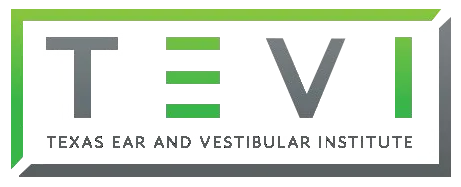The middle ear is an air-filled cavity that has many different parts. It consists of:

- Eardrum
- Two middle ear muscles -
- Stapedius muscle
- Tensor tympani muscle
- Eustachian Tube
- Auditory Ossicles (middle ear bones) -
- Malleus (hammer)
- Incus (anvil)
- Stapes (stirrup)
Functions of the Middle Ear:
- Match the low sound resistance of air to the high sound resistance of cochlear fluids – Sound enters the ear as a pressure disturbance of air. Our organ of hearing, the cochlea, is a fluid-filled organ. For those of us who have tried to talk underwater while swimming, we know that sound does not pass through water well. Because of this, the bones of the middle ear function as a lever system in order to make sounds louder, and therefore more audible.
- Protection – We have two muscles in our middle ear. These muscles contract in the presence of loud sounds. This stiffens the movement of the middle ear bones in order to protect our hearing.
- Pressure Equalization – The Eustachian tube is a small canal that opens and closes when we swallow, yawn, and chew. When the Eustachian tube opens, it equalizes the pressure in the middle ear space to match that of the environment that we are in.
What can go wrong in your middle ear?
- Otitis Media – Fluid build up in the middle ear space can either be infected or not. Either way, it impacts the movement ability of the auditory ossicles, hindering our ability to hear. When fluid in the middle ear becomes infected, our ears can become very painful and can sometimes result in a fever or a perforated ear drum.
- Negative Pressure – Allergies, coming into or out of an ear infection, and going up or down in elevation can cause our ears to become pressurized, especially if we cannot naturally equalize the pressure between our middle ears and our outside environment. In these cases, it is common to feel as though we need to pop our ears.
- Perforated Eardrum – A hole in the ear drum can occur from ear infections or trauma. Trauma can occur from very loud sounds, quick and extreme pressure changes, and physical impacts such as a Q-tip hitting the eardrum. Often times, perforated ear drums heal on their own; however, in some cases, surgical intervention may be needed based on the size or location of the perforation in the eardrum.
- Cholesteatoma – A cholesteatoma is a collection of dead skin cells and debris that builds up in a retraction pocket of the eardrum or middle ear space. These are common in people who have had a history of multiple repeated ear infections, eardrum perforations, ear surgeries, or a familial history of cholesteatomas.
- Otosclerosis – Otosclerosis is an abnormal growth on one or multiple of the auditory ossicles (most commonly on the stapes). This prevents the auditory ossicles from vibrating freely, hindering a person’s ability to hear appropriately. Depending on severity, otosclerosis is treated by routine monitoring and use of a hearing aid or surgical intervention.
- Mastoiditis – Mastoiditis is an infection of the bone in which the middle and inner ears are located. This is often a result of untreated middle ear infections and can be very serious if not treated promptly.
Fun facts about the middle ear:
- The space of your middle ear is approximately the size of a dime.
- The auditory ossicles are the smallest bones in the human body.
- Middle ear infections are more common in children because their Eustachian tubes lie perpendicular to the ground, hindering their ability to open and close properly. As we grow, our Eustachian tubes grow into a 45-degree angle with the ground, making it easier for them to open and close more freely.
- Hearing loss that has its origin in the middle ear system is often able to be medically managed or monitored. Furthermore, this type of hearing loss affects the volume of sound and not its clarity, allowing patients to be very successful with a hearing aid(s).

